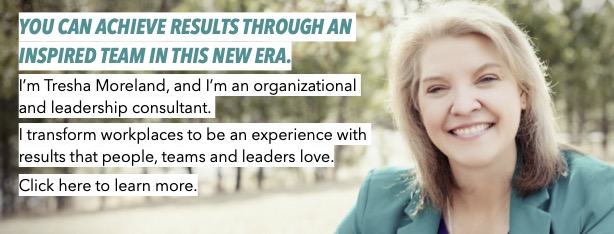An uncertain economy and inflation with very slow sign recovery has ushered in an era of high pressure to do more with less in the workplace. Less resources, less staff, less supplies, less budget, less wages, less benefits and so on. But even with these realities there is still the need to deliver goods and services, take care of customers, drive revenue, reduce waste, and increase productivity. That means, even with limited resources workplaces must still find ways to engage the existing workforce in order to achieve objectives. Unless leaders focus on talent management strategies it is easy to make mistakes and lose good employees ultimately impacting the bottomline.
10 talent management myths:
- Assuming should be grateful to have a job. Even in the day of the great resignation, I find it interesting to hear managers talk about employees being lucky to work where they work. In today's reality technology has enabled employees to work virtually anywhere, even if they are customer facing frontline staff. Reframing management's perception and assume employees can and will leave regardless of company slogans and perks is a good place to start reviewing your ability to retain top talent.
- Just get warm bodies in the seats will help minimize strain. If you are lucky one job opening may yield floods of applicants. However, many employers are finding it hard to find applicants for their job posting. The temptation to just hiring whomever shows up with a pulse may be too great to overcome. What is the bottom line to hiring out of desperation? Hiring the wrong employee is expensive. It could cost anywhere between two and three times the annual salary. It can be disruptive to the work environment. However, hiring the right employee has a return on investment in increased productivity and team morale.
- If we ignore team issues they will go away. As the saying goes, “Where there is smoke, there is fire.” It is one thing to allow team members to solve problems on their own; it is quite another matter when you see people leaving or a litany of serious complaints coming forth. It is a savvy leader that knows how to determine minor from serious issues and when and how to properly intervene.
- Team members are only capability of so much. For team members who aspire to take on more responsibility, learn more, do more, accomplish more: there is nothing takes the wind out of peoples sails faster than feeling like they are put into a box where they are assumed to have limits. An example is assuming someone is “too green” and rushing in and plopping solutions on them without giving them the consideration that they may have ideas or thoughts of their own. Or another example is a control freak micromanager who refuses to empower employees in order for them to problem solve and create solutions for the organization.
- Talent development isn't important right now. Tight budgets makes training and development an easy target for cuts. However, investing time in people development initiatives is a method that fits well with Daniel Pink’s book “Drive: the Surprising Truth About What Motivates Us.” Learning how to become a master (mastery) of your craft is one of the drivers of motivation. Helping team members utilizing appropriate development methods earn trust and respect. Take a real close look at team member potential and determine a development plan for them. Putting someone on a project that requires them to stretch their thinking and capability could be just the ticket to a great development opportunity.
- It's okay if you do as I say and not as I do. You can give someone a title and an office, but unless they have followers they are not a leader. The truth is creating and allowing a toxic environment will cause distrust, loss of productivity, and eventual turnover of employees. In an era where organizations need to gain traction on financial, customer service and quality initiatives it is critical to engage employees in organizational objectives. This is achieved by creating an environment of trust, integrity, and responsibility.
- There is no difference between accountability with blame. It is one thing to hold people to agreed upon goals and objectives, it is quite another thing to blame them for things they have no control over. One will improve performance, the other will cause burnout and distrust. In these delicate times, make sure leaders know the difference.
- Taking an occasional shortcut will save time and energy . There are many are prime examples of how poor quality decisions can potentially destroy a company. In a time where cost cutting measures are necessary, quality should never be part of it.
- There is no time to communicate. In delicate times communicating early and often is a must. While top leaders may know this well, often overlooked is if and how the front-line supervisors are communicating. Communicating facts will help dispel misinformation and prevent needless worry. But an effective organization ensures all levels of leadership embrace good communication practices.
- All employees know we appreciate them. The pressure of managing in a tougher economic climate makes it is easy for managers to primarily focus only on business issues and overlook what is going right. Even when being bombarded with reports indicating revenue losses, increases in expenses or regulatory pressures, it is critical to take the time and thank team members for a job well done. After all, employees are also feeling the strain of difficult times with many possibly facing foreclosures, limits on credit and shrinking retirement accounts. A sincere thank you in the workplace goes a long way.
Leaders can avoid these mistakes and at minimal cost. The return on investment can be significant including increased retention, productivity, healthy work environment, and satisfied employees and customers. What more can you ask for?

Latest posts by Tresha Moreland (see all)
- Find Your Anchor In A Sea Of Fear - April 18, 2024
- Overcoming Career and Life Plateaus - April 13, 2024
- How HR Strategies Can Revitalize Customer Service Excellence Post-Pandemic - April 11, 2024













